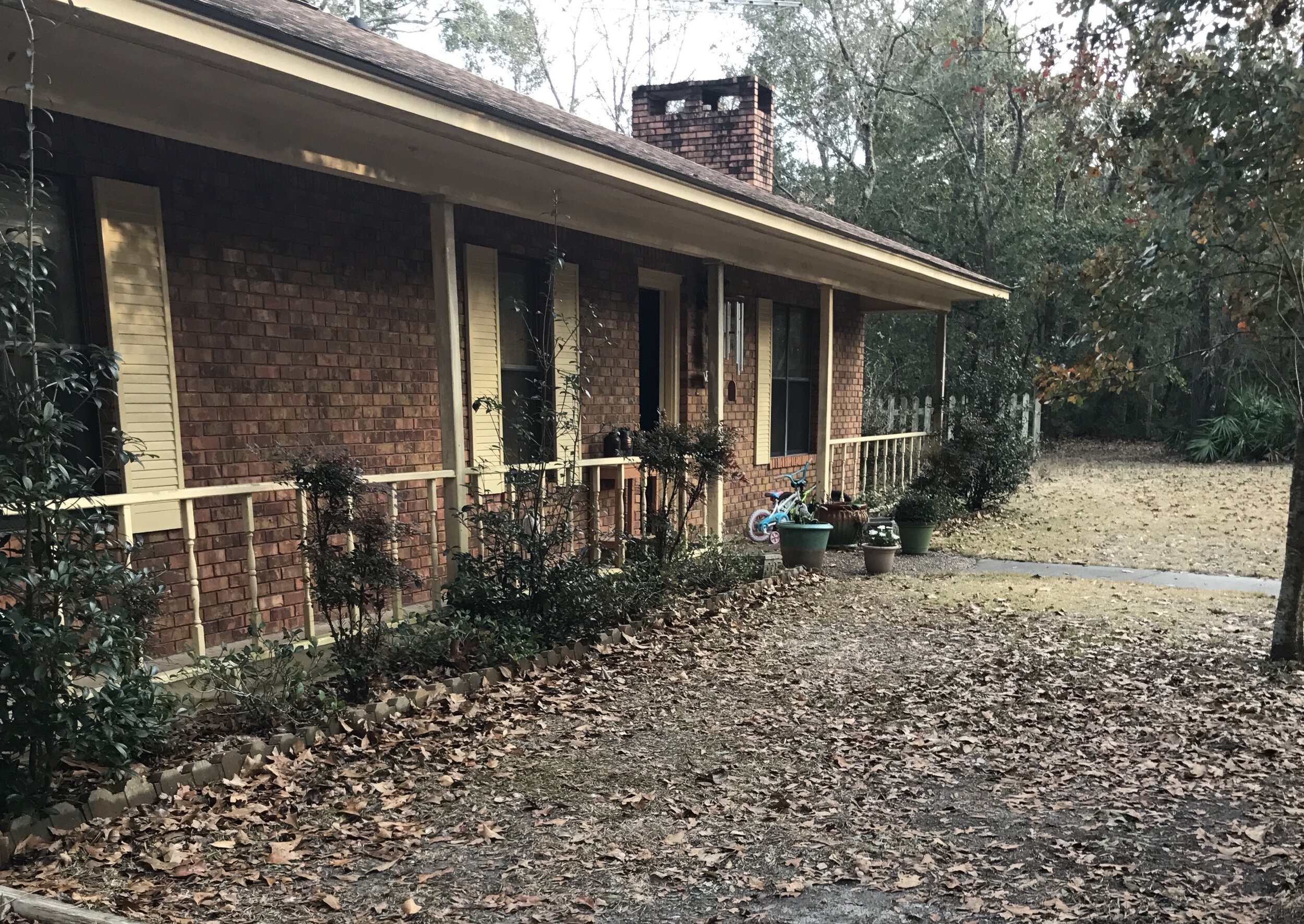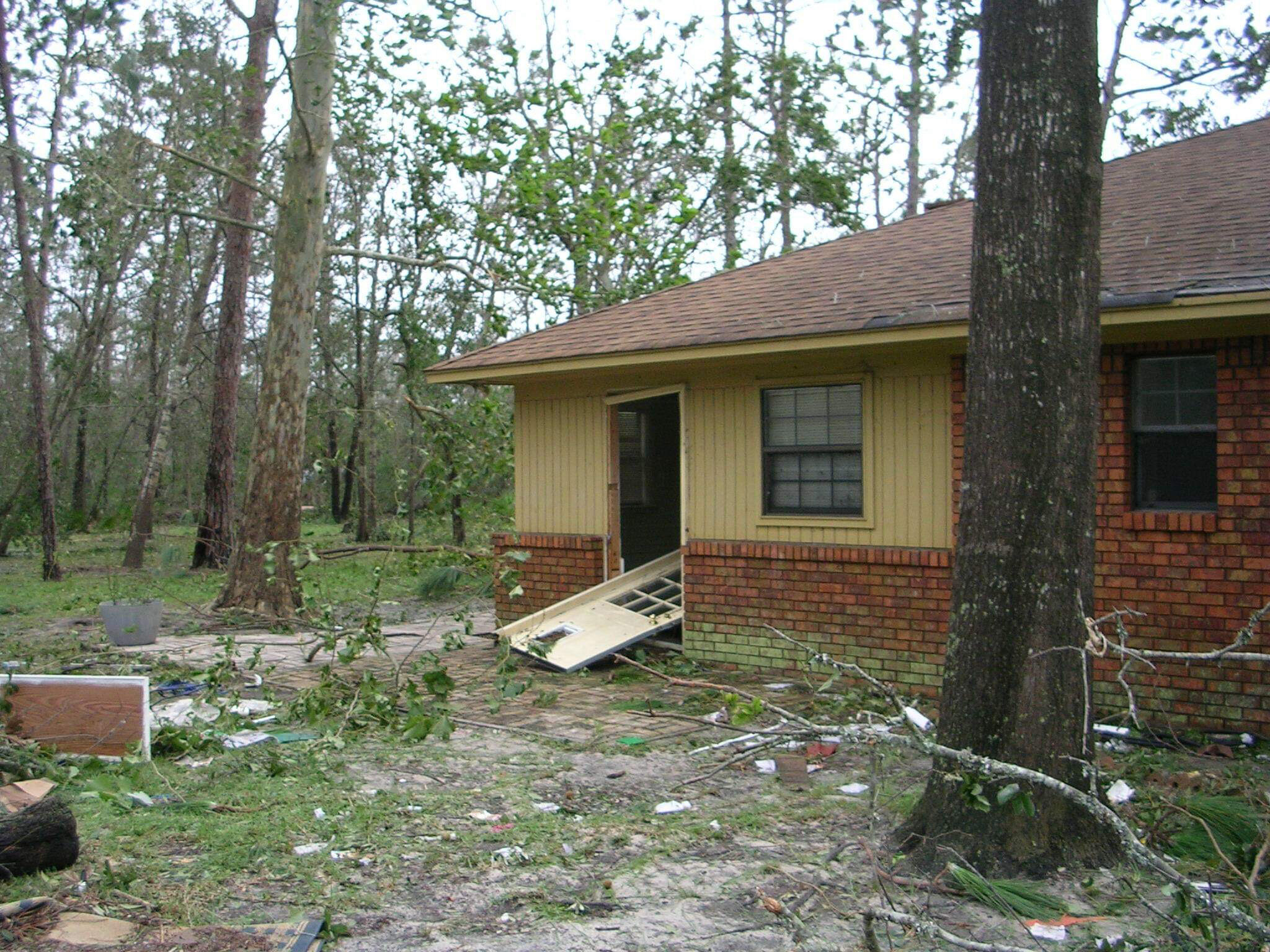By Lindsey Abernathy
January 8, 2o20
The house on Lynne Street is a modest one. Fifteen-hundred square feet for a family that, at our peak, included five people, a whole slew of hound dogs, and two cats. Tucked among the pines, mimosas, and tangles of blackberry thorns on Mississippi’s coast, it always seemed to me the house was never particularly interested in calling attention to itself, or in standing out from the wildness around it.
My childhood home is sturdy brick, the color of fallen pine needles, trimmed with shutters painted a comforting, golden yellow, that popular shade from the 1980s. For most of my adolescence, Lynne Street was dirt-packed and orange. Mom was always sweeping its dust out the front door. When the city finally paved our street, I imagine the house blushed, uncomfortable with the fuss.
It sits on three quarters of an acre in an out-of-the-way area between Ocean Springs and Gautier, once called the Island of Belle Fontaine for the miles of bayous and marshland that border it to the north. The Mississippi Sound is less than a mile south, Graveline Bayou even closer; just up the road. And all around it, trees.
As kids, we lived seamlessly between the house and the coastal forests. My sister, brother, cousins, and I could spend whole days in the woods with our dogs, branches slapping us in the face as we raced forward - discovering natural spaces and claiming them as our own.
We gave them names. There was the Pine Straw Hideout, just to the left of the house. It was small, carpeted with browning pine needles. Branches above caught and held even more needles, creating a sort of roof. They pricked our bare skin, but it was just the right size for two kids to slip in, undetected.
The Pan Tree was on the other side of the house, a water oak so grandiose we named it in honor of Peter Pan and the Lost Boys. Pan Tree was accessible via a clearing from the main road, or — my preferred method — by charging, hands over eyes, into the woods from Lynne Street, with blind faith I would burst breathless into the clearing a few seconds later. At some point during its long life, Pan Tree had leaned sideways under the weight of a massive branch, which shared the burden with the forest floor. It practically asked us to scramble up it.
Two cousins lived a street over, their house reachable by a makeshift path through the woods that reliably provided a face full of spider webs. On one particular day, our cousin summoned us, under absolute secrecy, to Pan Tree, where he announced we would try coffee for the first time. He had acquired a metal coffee camping set. We huddled together, squatting on our haunches as he made a show of brewing a pot. Not realizing coffee requires hot water, we drank the cold, mealy liquid from stainless steel mugs, the grounds catching in our teeth and under our tongues. We unanimously concluded coffee didn’t live up to the hype.
Perhaps most exciting was Mr. Tony’s farm. Thrillingly, to us kids, the animals were always escaping. And they weren’t your run-of-the-mill farm animals.
The back of Mr. Tony’s property bordered Lynne Street, culminating in a big, blue, metal gate directly across from our house. My mother, brother, and I arrived home one day to find a male peacock - tail feathers fanned in turquoise and emerald glory - standing in our dirt driveway. Emus laid eggs in my father’s abandoned fishing boat. More than once, a horse got out. On the most memorable occasion, we huddled in the living room, watching from the window as a mare ran laps around the house.
There was more. Down the main street from us was a beach with no name, at least that we knew of, and a view of the shipyard across the sound. Exciting treasures often drifted onto the beach; the day we found a coconut was particularly thrilling. The beach was lined with homes, and we had located, to our delight, a dangerously shaky treehouse. Mom forbid us to go barefoot out there, where cockleburs hid in the grassy sand and boards with rusty nails regularly washed ashore.
There was an abandoned school bus rotting in the woods near my cousin’s house, and a pier stretching out into Graveline Bayou that was good for crabbing. When the city built a volunteer fire station nearby, we added this to our list of areas to keep an eye on. Our diligence paid off; we discovered a waterlogged box of paperback romance novels in the ditch behind the station. I visited it regularly, until the pages were too covered in rain, dirt and rips to read anymore.
When my parents finally decided they wanted us back, Dad honked the horn of his blue Ford truck three times. Not two. Not four. We’d come running, hungry for plates of fried Gulf lemonfish and heaping piles of baked beans for dipping.
I don’t live there anymore.
Eventually, we grew older. The blue Ford was repossessed. Shortly after, Dad left and stayed gone.
I left, too. Fourteen years ago, I made the 350-mile trek up Highway 49 and then 55 to study journalism in the landlocked town of Oxford, Mississippi. I had abandoned the Pine Straw Hideout years before; the dogs were long buried on a hill in the woods behind the house.
Two weeks later, Hurricane Katrina made landfall on the Gulf Coast. With the unnamed beach on one side and Graveline Bayou on the other, Lynne Street never stood a chance.
Many in the area did not rebuild. It is eerie out there now - shells of houses still standing side by side with occupied homes. The unnamed beach is almost truly wild now; only a handful of structures stand where dozens once stood. They face the water, overlooking destroyed piers and pilings and split concrete slabs that are slowly succumbing to the gulf and the encroaching grasses.
My mother did rebuild. She died last year, but the little house still stands, tidy as always, with the same bricks and golden shutters, though they are aged by the years.
Across the street, you’d never know Mr. Tony’s farm existed. Brush and greenery have grown strong and bold, overtaking the metal gate completely. Pan Tree is still back there, somewhere in those woods, waiting for another child to discover the magic.
Lindsey Abernathy lives in Oxford, Mississippi, where she works in higher education sustainability. As a kid growing up on the Mississippi Gulf Coast, she spent countless hours exploring the coastal forests, bayous and beaches of the Mississippi Sound. Lindsey dedicates this essay to her mother, Donna Catchot.












